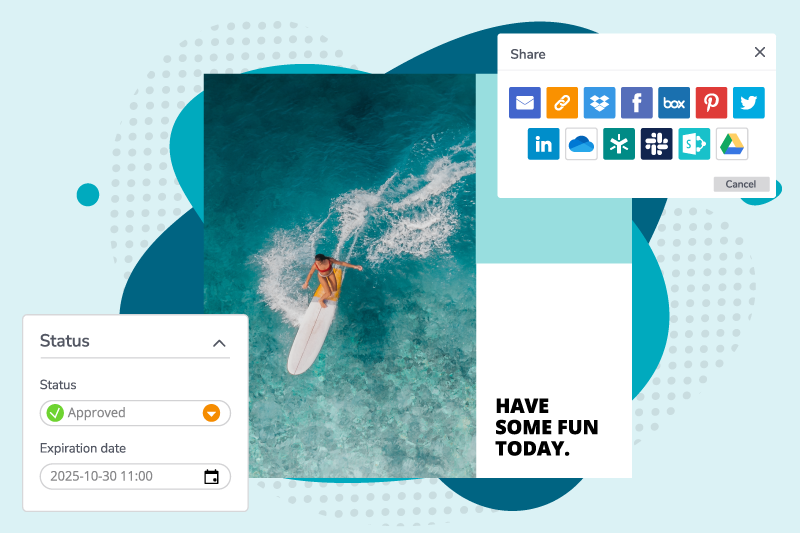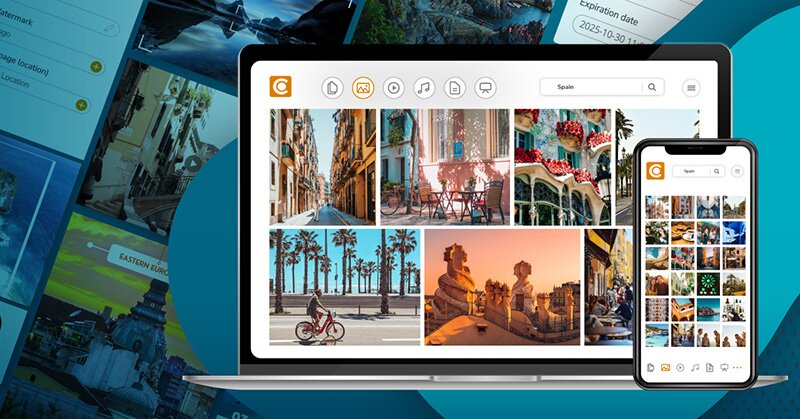Mike Paxton, Chief Revenue Officer at Canto, explores three scenarios where DAM [Digital Asset Management] software is being used by marketing, digital and creative teams and their partners to work with greater commercial agility.
_w=800_h=533_pjpg.jpg?v=20230522122229)
Guest Post: How Digital Asset Management software is helping travel brands adapt to uncertain times
Brands in the travel, leisure and hospitality sectors are facing huge challenges during these unpredictable times.
Consumer confidence to travel has been knocked like never before, and there are no guarantees on what tomorrow has in store.
With such unpredictable circumstances over the past two years putting pay to many best-laid plans, marketing teams have had no choice but to adapt.
Many who have successfully navigated this volatility have done so by ensuring their team’s way of working and their bank of brand assets and digital content are as organised as possible.
It’s about controlling what you can in order to be better prepared for what you can’t. It’s why the marketing, digital and creative teams behind global brands including Sydney Airport, Falkensteiner Hotels and Kenya Tourism Board use digital asset management (DAM).
What is digital asset management?
If you’ve ever struggled to find digital content, you know what it’s like to have a storage system that’s working against you.
Poorly planned file storage can create bottlenecks and bring creative flow to a screeching halt.
Unfortunately, most teams have experienced this first-hand. Setting up a content library that works for you, not against you, is vital for the ability to pivot your marketing strategy within hours.
Digital asset management is the software that enables this while helping teams work faster and smarter by streamlining the way they organise, find and share their digital content, including imagery and video.
Let’s explore how it helps marketing, digital and creative professionals to overcome three familiar scenarios.
1. People can’t quickly find what they’re looking for
When you need to move fast, out of necessity or to capitalise on a commercial opportunity, everyone needs the latest approved assets at their fingertips.
Many companies have digital assets spread all over the place – including shared servers, SharePoint, Google Drive, Dropbox, and individual devices.
By centralising your files in a single library, you remove the first hurdle to finding what you need: knowing where it’s stored.
Just as importantly, keeping all your brand assets in a centralised library also helps unify the look and feel of your brand, which is important when producing content for digital channels, particularly at speed.
Internal team members as well as external agencies can draw from the same set of graphics, imagery and video, no matter where they’re based.
Social media managers can easily find pre-approved imagery that reflects your brand, for a variety of circumstances. Plus, with everything in the same place, it’s easy to maintain an overview of what’s in your brand’s library and take outdated content out of rotation.
DAM includes in-built features such as image recognition and facial recognition. This means, for example, every photograph on file of a spokesperson, model or brand ambassador can be found in a matter of seconds.
Tags can be auto-generated or applied manually to files, including year, location, campaign, content creator, and more. This makes finding precisely what you are looking for among thousands of folders a whole lot easier. You can select, for example: ‘aeroplane’; ‘summer’; ‘family’.
If your team is hybrid working, DAM offers a big advantage. Being cloud-based, your library can be accessed from a desktop web browser or mobile app by anyone who has permission, from anywhere, and on any network.
Your digital assets are all in one place, making life just as easy for national and international team members and partners.

2. It’s not easy to share assets with anyone
Now that your assets are organised, you can take advantage of new ways of working. DAM allows you to open up your content library without losing control.
You can choose exactly who you share which folders and files with, doing away with clunky WeTransfer and Dropbox file transfer services or limited SharePoint access.
With DAM you can also create ‘Portals’. These are an easy way to share specific content with an audience – whether they have an account with the DAM provider or not.
They are a space where files can be hosted – for example, travel destination photography and video, as well as latest brand guidelines and associated brand assets.
Portals can be made public or private, to share content at scale and with consistency. This could include sharing with media, travel agents, or tourism organisations. Offering flexible configuration options and customisable branding, they adapt to fit a whole host of business needs.
When people can self-serve and help themselves, everybody wins. The marketing team no longer has to respond to myriad requests for assets.
Commercial teams and international partners can equip themselves to bring in opportunities, and you can democratise storytelling by opening your image libraries up to staff.

3. The guidance that goes with a file is missing
A well-functioning library is more than just a place to store your media files – it also needs to store all the information that goes with them. This not only makes your content searchable, it provides helpful guidance for how to use it.
For example, if travel restrictions or guidance are introduced you can set dates to activate and deactivate assets automatically at the right time. Want images to be used only in certain campaigns? Label them clearly, so there’s no confusion.
Tagging again has an important role to play. With this you can attach instructions or permissions – for example, whether the image or file can be used publicly or not, or whether it has been approved by necessary parties.
When you keep track of copyright and use permissions in the same place you store your files, you can publish content confidently without running foul of restrictions. And managing digital rights is even more important when you’re sharing files externally – be it with partner organisations, the press, or others.
Digital content is growing at an increasing rate. DAM offers a better way to unify and modernise its usage across your organisation. It means your team is more productive and better prepared, no matter how uncertain times may be.
Canto attended this year’s Travolution European Summit on May 4. If you missed them find out more about Canto for Travel and Hospitality or catch up on their recent webinar with Sydney Airport and Falkensteiner Group.



